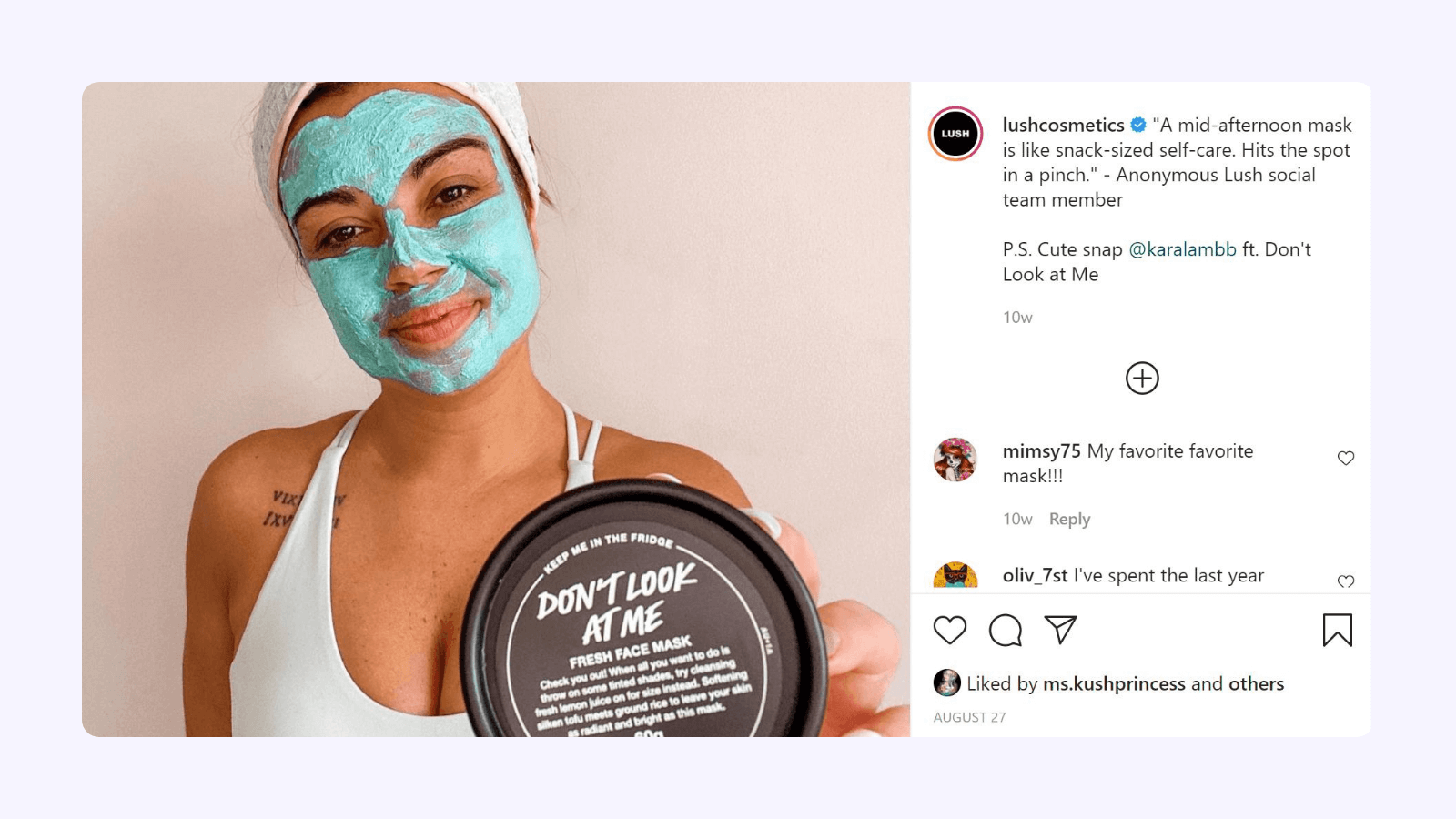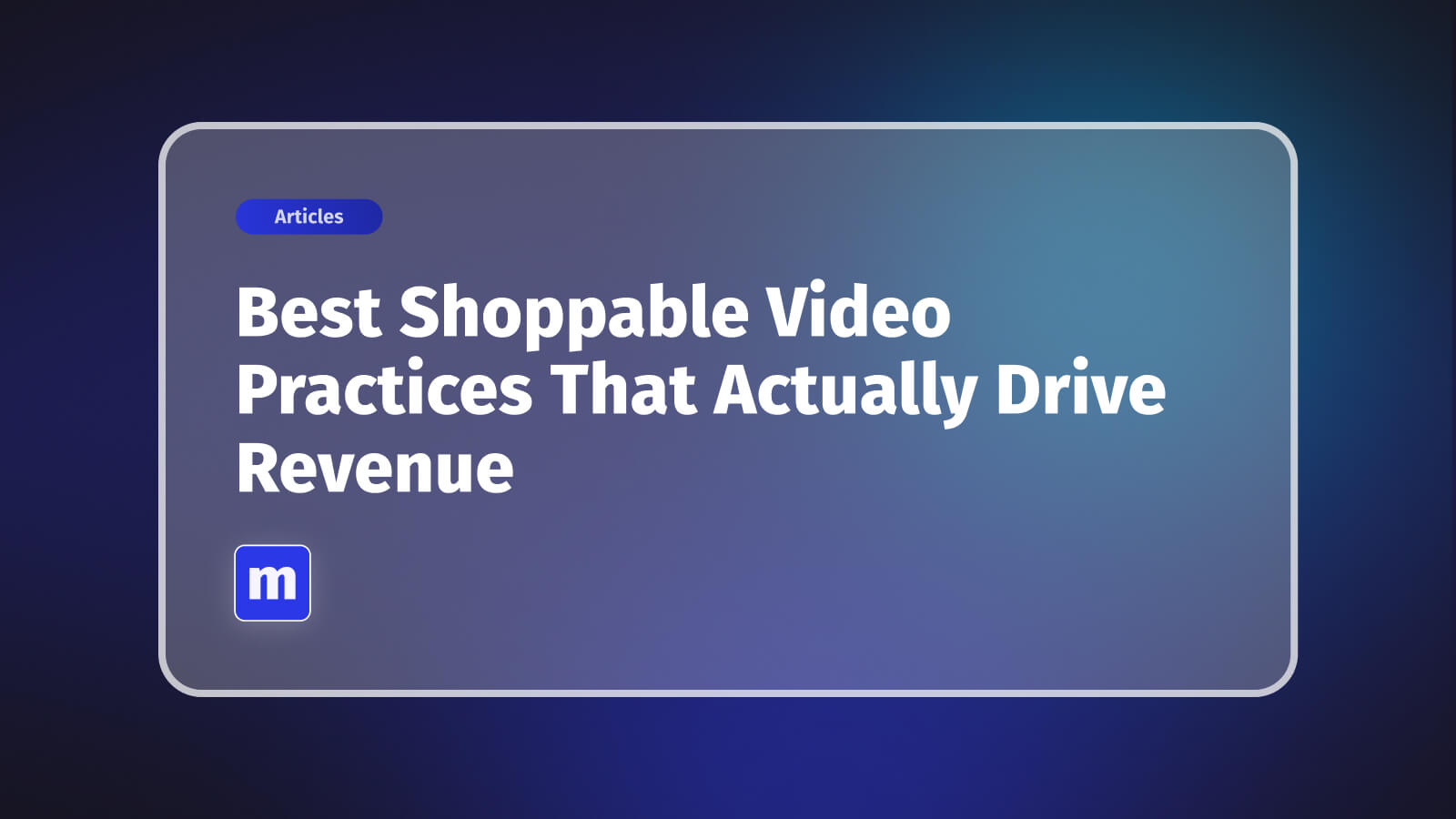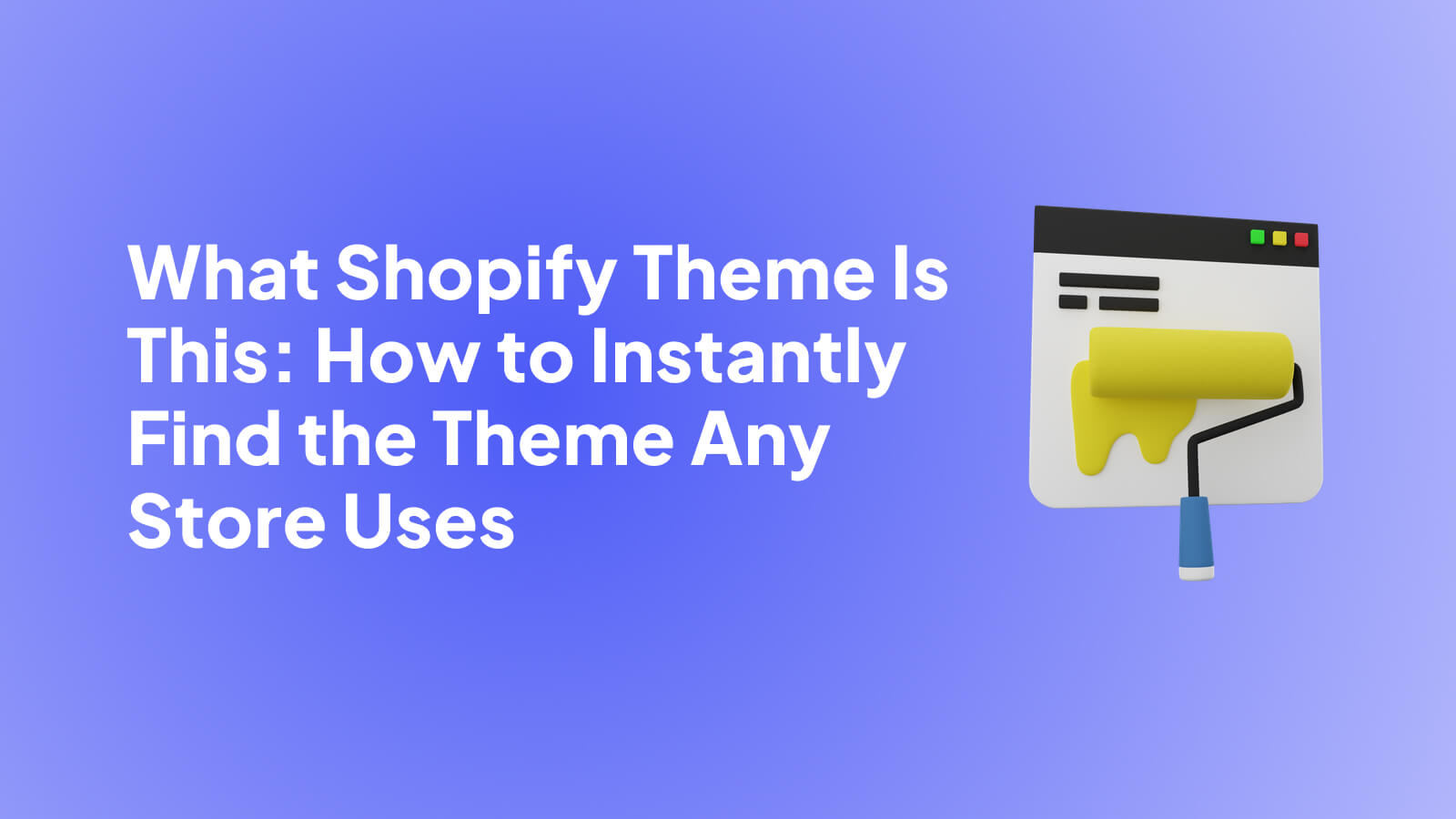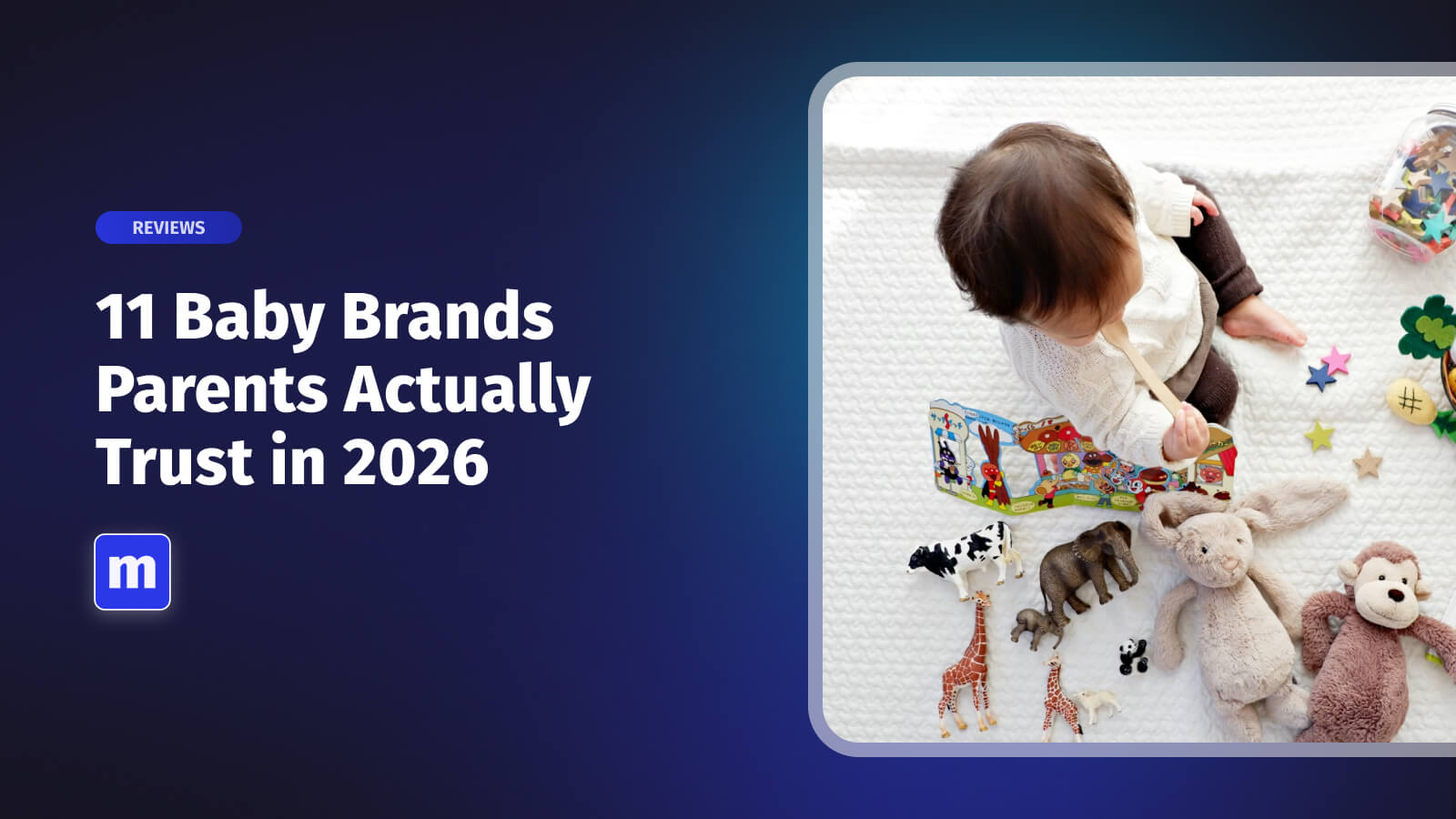.jpg)
Ever marvel at how certain brands seem to have a secret sauce for connecting so authentically with their audiences? It's as if they're not just pushing products but genuinely engaging in a two-way conversation. The secret ingredient? User-Generated Content (UGC). This approach is changing the game in how brands interact with people just like you and me.
The power of UGC is undeniable. The power of UGC is undeniable. According to a report from Adweek, content created by users earns 6.9 times more engagement than content generated by brands directly. This underscores the tremendous impact that UGC creators have in amplifying a brand's message in a way that resonates more deeply with audiences.
This stat is a game-changer, emphasizing why turning loyal customers into UGC creators is becoming a top strategy for brands aiming to resonate with their audience on a deeper level.
Why is this a big deal? In our digital-first world, authenticity wins. People are drawn to genuine experiences and real-life testimonials over polished advertisements. UGC creators bridge this gap, offering a window into the real impact of products and services through the eyes of fellow consumers.
As we peel back the curtain on brands excelling with UGC, we'll see how this strategy isn't just about keeping pace but about leading the charge. By empowering customers to share their stories, these brands are not only enhancing their credibility but also building vibrant communities rooted in trust and engagement.
Let's jump into the journey of discovering how these trailblazers are turning everyday customers into powerful advocates and storytellers through the magic of UGC.
The Impact of UGC Creators on Brand Engagement
Alright, so we've set the stage with the undeniable importance of UGC. But what happens when brands really lean into this strategy, tapping into the power of UGC creators? Spoiler alert: it’s more than just a boost in likes and shares. The impact on brand engagement is profound and multifaceted. Let’s break it down.
First up, authenticity. In a digital landscape cluttered with ads, UGC shines as a beacon of authenticity. When real users share their honest experiences, it cuts through the noise like a hot knife through butter. This authenticity not only grabs attention but holds it, creating a deeper connection between the brand and its audience.
Then there's trust. Remember walking into a store and the salesperson raving about a product? Nice, but you'd probably take it with a grain of salt. Now, imagine a friend raving about the same product. Changes things, right? That's the power of UGC. It's like having thousands of friends recommending products to one another. This peer endorsement builds a level of trust that traditional advertising can rarely achieve.
Engagement is another big win. UGC creators produce content that resonates with their followers, encouraging likes, comments, and shares. This isn't just passive engagement; it's active and meaningful interaction that keeps the brand at the forefront of consumers' minds. Plus, it signals to algorithms that people are digging this content, further amplifying its reach.
.png)
Don't forget about relevance. UGC keeps your brand relevant. By featuring real people in real scenarios, it ensures your brand stays connected with current trends and conversations. This relevance is key to maintaining a dynamic and engaging online presence that keeps audiences coming back for more.
Lastly, community building. UGC isn’t just about the one-off post; it's about fostering a sense of community among users. When people see their content featured by a brand, they feel valued and part of something bigger. This sense of belonging can turn casual users into loyal brand advocates, driving long-term engagement and loyalty.
So, there you have it. The impact of UGC creators on brand engagement isn’t just significant; it’s transformative. By harnessing the power of real stories from real people, brands can forge stronger connections, build trust, and create a vibrant, engaged community. Now, that's something to aim for, wouldn't you say?
Five Brands Excelling in the UGC Arena
1. Lush Cosmetics: Championing Ethical Beauty Through Real Voices
Lush has always danced to the beat of its own drum, and when it comes to UGC, they're leading the parade. They've ingeniously turned their commitment to ethical beauty into a community-driven conversation, thanks to a few clever strategies.
LushLife: This hashtag is the backbone of Lush’s UGC strategy. Customers are encouraged to share their Lush product experiences, from bath bomb demos to skincare routines, using the hashtag. It’s not just about showcasing the products; it’s about sharing the joy and fun they bring into everyday life. The result? A vibrant tapestry of real-life product applications that feels authentic and relatable.
Product Reviews and How-Tos: Lush takes the gold for leveraging customer reviews and tutorials. By incorporating these into their product pages and social feeds, they not only boost confidence in their products but also create a platform for customers to share their expertise and experiences. It’s a two-way street where feedback is valued and shared, reinforcing the community vibe.
Ethical Campaigns: Lush’s commitment to causes like animal welfare and environmental sustainability is a big part of their brand. They smartly integrate this into their UGC strategy by encouraging customers to share their own stories and actions related to these causes, using specific campaigns and hashtags. This approach not only amplifies their ethical message but also strengthens their community's bond over shared values.

Behind-the-Scenes Access: Ever wondered how a Lush bath bomb is made? Lush pulls back the curtain with UGC that takes customers behind the scenes. From manufacturing processes to staff stories, this transparency builds trust and deepens the customer-brand relationship.
Featured Fan Content: Lush regularly features fan-generated content across their platforms, from Instagram to their website. This not only rewards engaged customers by showcasing their content but also exemplifies the diversity and creativity of the Lush community. It’s a nod of respect and appreciation towards their customers, and let’s be honest, it’s pretty cool to see your own face or post pop up on a brand’s official page.
In essence, Lush Cosmetics has mastered the art of UGC by making it an integral part of their brand storytelling. They've created a community where customers are not just passive buyers but active participants in the brand narrative. This level of engagement is what makes Lush stand out in the crowded beauty market, proving that when it comes to UGC, they're not just playing the game; they're setting the standard.
2. TOMS Shoes: Walking the Talk with Social Impact
TOMS isn't just in the business of selling shoes; they're in the business of making a difference, one pair at a time. Their UGC strategy? It's as unique as their business model, leveraging the power of storytelling to highlight their impact and connect with their audience on a deeper level.
One for One Giving Model: The cornerstone of TOMS' brand is their commitment to match every pair of shoes purchased with a new pair given to a child in need. But how do they bring this to life through UGC? By sharing stories and images from their giving trips around the world. Customers aren’t just buying shoes; they’re stepping into a story of global impact. Through user-generated content, TOMS shares the journeys of their shoes from factory to far-flung communities, making customers co-authors of their philanthropic narrative.
WithoutShoes Campaign: Perhaps one of the most ingenious UGC campaigns TOMS has launched is the WithoutShoes initiative. Here, they encourage people to post pictures of their bare feet on social media. For every post, TOMS donates a pair of shoes to a child in need. This campaign not only raises awareness but also actively engages the community in their mission. It’s a brilliant example of how a brand can leverage UGC to amplify their impact and involve their audience in their cause.

TOMS Tribe: The community of TOMS wearers, affectionately known as the TOMS Tribe, is a vibrant group of individuals who share more than just a taste in footwear; they share a commitment to making the world a better place. Through UGC, TOMS highlights stories from the tribe, showcasing how individuals are using their TOMS to make a statement, whether it’s on a local volunteer day or an adventure across the globe. This sense of belonging and shared purpose is palpable in every post and story shared.
Engagement Through Challenges: TOMS regularly engages its audience with challenges and calls to action that are easy to participate in and share. Whether it’s showing off a new style in an everyday setting or sharing a personal story related to their mission, these challenges encourage users to create content that’s not just about a product but about a movement.
Impact Reports and Customer Stories: Beyond the campaigns and hashtags, TOMS takes it a step further by integrating UGC into their impact reports and customer stories. This transparency not only shows the tangible difference their community is making but also strengthens trust and loyalty among their customers. It’s a powerful reminder that every purchase, and every piece of content shared, contributes to a larger narrative of change.
TOMS Shoes exemplifies how a brand can use UGC not just to sell products but to build a community united by a common goal. Their approach goes beyond traditional marketing, inviting customers to join a movement that’s walking the talk on social impact. By integrating customer stories and contributions into their broader narrative, TOMS isn’t just talking about change; they’re making it happen, one post, one pair, one step at a time.
3. Wayfair: Decorating Dreams with Real Homes
Wayfair has turned online furniture shopping from a guessing game into a community show-and-tell. Their secret? Embracing the real, lived-in beauty of homes worldwide, all through the lens of UGC.
Customer Photo Reviews: Wayfair takes the idea of "show, don't tell" to heart. By encouraging customers to share photos of their purchases in situ, potential buyers can see how that sofa or lamp looks in a real living room, not just a showroom. This not only adds a layer of trust but also sparks ideas, showing the versatility of Wayfair’s offerings in various decor settings.
#WayfairAtHome: With this hashtag, Wayfair invites customers to flaunt their flair for interior design. It’s a goldmine for anyone looking for inspiration or validation of their design choices. Wayfair doesn’t just passively collect these posts; they actively celebrate them by featuring customer homes on their website and social media channels. It’s a win-win: customers get a moment in the spotlight, and Wayfair shows off the real-world appeal of their products.
Room Planner and 3D Visualization Tools: While not UGC in the traditional sense, Wayfair’s innovative tools like the Room Planner and 3D visualization features empower customers to become designers themselves. Users can create and share their dream spaces using Wayfair’s catalog, effectively turning their visions into potential UGC posts. It’s a savvy way of blurring the lines between brand content and user content, all while engaging customers in the design process.
.png)
Community Q&A: Wayfair’s product pages are more than just specs and sales pitches; they’re hubs of community interaction. Customers can ask questions about products, to which other customers can respond based on their own experiences. This peer-to-peer advice system not only enriches the product information but also builds a supportive community around shared interests in home decor.
Influencer Collaborations: Recognizing the power of influencers in the home decor space, Wayfair partners with decor enthusiasts and interior designers to showcase how they use Wayfair products in their projects. These collaborations offer a blend of professional insight and personal taste, providing a rich source of inspiration and trustworthiness to Wayfair’s audience.
Wayfair’s UGC strategy brilliantly demonstrates how a brand can transform shopping from a solitary activity into a communal exchange of ideas and inspirations. By leveraging real customer experiences and spaces, Wayfair not only showcases the potential of their products but also builds a vibrant community of home enthusiasts eager to share their stories and spaces. It’s about making every house feel more like a home, one shared photo at a time.
Let's glide into the glamorous world of Sephora, where beauty is not just sold but celebrated through the vibrant voices of its community. Sephora's approach to UGC is like a masterclass in blending product allure with real-world charm.
4. Sephora: Beautifying the World with Real Reviews
At Sephora, UGC isn’t just a strategy; it’s the heartbeat of a beauty empire that thrives on authenticity, diversity, and creativity.
Beauty Insider Community: Sephora’s Beauty Insider Community is a dazzling digital forum where beauty lovers converge to swap stories, tips, and tricks. It’s a treasure trove of UGC, from detailed product reviews to personal skincare routines. This platform not only empowers customers to share their beauty journeys but also fosters a sense of belonging among Sephora’s vast customer base.
#SephoraSquad: This influencer program is a cut above the rest. Sephora handpicks diverse beauty enthusiasts who genuinely love and use their products to become part of the #SephoraSquad. These members produce relatable content, from makeup tutorials to skincare hacks, making beauty accessible to all. It’s influencer marketing with a heart, prioritizing genuine engagement over mere follower counts.
Ratings and Reviews: Sephora’s product pages are adorned with customer reviews that go beyond simple star ratings. Shoppers share in-depth accounts of their experiences, often accompanied by photos and videos of the products in action. This wealth of real-user content not only guides potential buyers but also amplifies the trust factor, showing that Sephora values customer voices.
.png)
Virtual Artist App: In a stroke of digital genius, Sephora’s Virtual Artist app allows users to try on makeup virtually, creating looks they can share across social platforms. This interactive experience not only engages customers in a hands-on way but also generates a stream of UGC as users post their virtual makeovers online. It’s a fun, engaging way to explore and share beauty, all while drawing users back to Sephora’s products.
Featured UGC Campaigns: Sephora regularly celebrates its community by featuring user-generated content in their marketing campaigns, social media channels, and even in-store displays. By highlighting real customers and their beauty stories, Sephora underscores the diversity and inclusivity that the brand stands for. It’s a powerful way to show that beauty comes in all forms, and everyone is welcome.
Sephora’s savvy use of UGC goes beyond showcasing products; it creates a vibrant, inclusive community where every beauty enthusiast has a voice. Through forums, influencer partnerships, and interactive tech, Sephora invites customers to share their beauty worlds, making the brand not just a retailer but a trusted friend in the beauty journey.
Alright, let’s jump onto the Peloton bandwagon and see how this fitness phenomenon is pedaling its way to UGC greatness. Peloton isn’t just about selling exercise equipment; it’s about fostering a community that sweats, cheers, and grows stronger together.
5. Peloton: Pedaling Together Towards Fitness Goals
Peloton has taken the concept of a workout from a solitary endeavor to a shared, communal experience, all thanks to their ingenious use of UGC. Here’s how they're doing it:
#PelotonProud: Peloton encourages its riders and workout enthusiasts to share their workout achievements, milestones, and sweaty selfies with the hashtag #PelotonProud. This not only allows members to celebrate their personal victories but also inspires others in the Peloton community to push harder. It’s a cascade of motivation, powered by the very people who benefit from it.
Leaderboards and Live Shoutouts: One of Peloton’s signature features is its live classes with real-time leaderboards and instructor shoutouts. This clever mechanism turns what could be a mundane morning ride into an exhilarating experience. Users aren’t just cycling in their living rooms; they’re part of a live, dynamic community. The real kicker? Users often share these shoutouts on their social media, showcasing their achievements and, inadvertently, promoting Peloton’s engaging platform.
Featured Member Stories: Peloton regularly spotlights stories from its community, from transformative fitness journeys to how Peloton has helped members through tough times. These narratives are shared across Peloton’s social media platforms and on their website, emphasizing the real-life impact of their product beyond the physical aspects. It’s storytelling at its finest, with the users themselves as the protagonists.
.png)
Challenges and Tags: Peloton uses challenges and tags to foster a sense of camaraderie and competition. Whether it’s a 30-day challenge or a special event like "Peloton Pride," users are encouraged to participate and share their progress. This not only keeps users engaged but also generates a stream of UGC that keeps the community buzzing and attracts newcomers.
Community Groups: Beyond the official channels, Peloton enthusiasts have taken to creating their own Facebook groups, Reddit threads, and Instagram accounts dedicated to sharing tips, achievements, and words of encouragement. While not directly managed by Peloton, these groups amplify the brand’s presence and foster a deeper sense of community among users.
Peloton’s approach to UGC is a masterclass in building an active and engaged community. They’ve tapped into the power of shared experiences and mutual encouragement to not just sell a product but to create a lifestyle and a community that members are eager to be a part of. Through strategic hashtags, community highlights, and interactive features, Peloton isn’t just a fitness company; it’s a central hub for a global fitness community, pedaling together toward better health and camaraderie.
Conclusion: UGC Builds Authentic Brands
From Lush’s ethical beauty baths to TOMS’s philanthropic footsteps, Wayfair’s cozy living rooms, and Peloton’s sweaty, high-energy rides, we’ve seen a masterclass of how UGC isn’t just about marketing. It’s about building communities, sparking conversations, and creating genuine connections that transcend the traditional buyer-seller relationship.
These brands remind us that in the digital age, authenticity reigns supreme. People crave real stories, real experiences, and real engagement. By empowering their users to be storytellers, brands can harness the power of UGC to not only enhance their visibility but also to foster trust, loyalty, and a sense of belonging among their audience.
So, whether you’re a startup looking to carve out your niche or an established brand seeking to rejuvenate your digital presence, let these stories inspire you. The essence of a great UGC strategy lies in its ability to make every customer feel like a valued part of your brand’s journey. It’s about celebrating the individual while building a unified community that shares, supports, and grows together.
As we close this chapter, let’s take a moment to appreciate the creativity, passion, and authenticity that fuels the UGC machine. And remember, in the vast world of content, the most powerful messages are those that come directly from the hearts and experiences of your users. So, go ahead, encourage them to share their stories. You might just be surprised at how far those stories can travel.
Related content
Turn your social content into a revenue channel
Turn your TikToks and Reels into shoppable videos and boost conversions by 3.5x.













